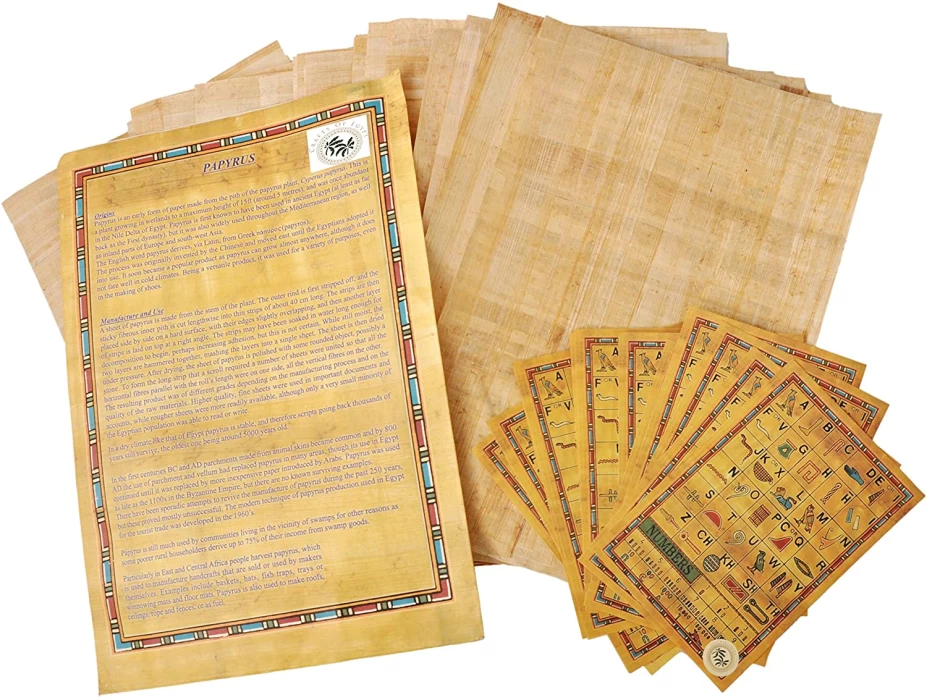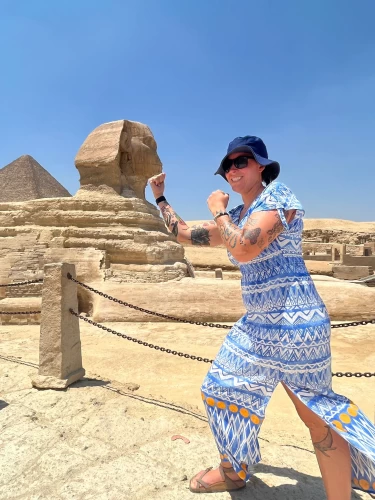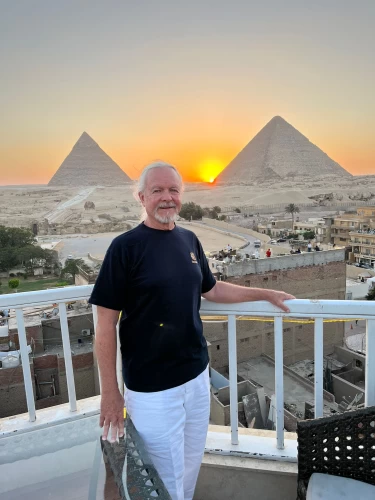
Papyrus Manufacturing Tour
Egyptian Papyrus
Every tourist coming to Egypt has a regular question How can I get Egyptian Papyrus? We have a lot of shops till now like a gallery of Papyrus you can see by yourself its stages of development from a beginner when Papyrus was just a trunk of the plant till growing and cutting then you can write your name on it
Processing & name
Papyrus is the Greek name for the plant and may come from the Egyptian word paper, which is 'royal' or 'pharaoh' as the central government owned the ground and later oversees the farms the plant grew on. Forms of freshness are called by ancient Egyptians the plant Djet, or Tjufi, or Wadj. Wadj also points to lushness, flowers, and greenness. After cutting, harvesting, and processing papyrus, djema could mean "clean" or "open" concerning the fresh surface of the writing process. It was called djema.
Examples & Uses
Old Egypt's writers have been learning their craft for years and, even if they come from rich families, they are still unable to waste their lessons with precious material. David notices "Ostraca and pieces of wood were the most common and cheapest writing materials.
These were often used for letters and exercises by schoolboys "There was a mistake (200). Only once the basics of writing were mastered was one permitted to practice a scroll in papyrus. David noted how ostraca exercises are sometimes replicated on papyrus, which often gives missing words or sentences in any form to incomplete works.
Papyrus Manufacturing Tour
The papyrus of Egypt is most closely associated with writing - in fact, the English word 'paper' comes from the word 'papyrus' - but the Egyptians found many uses for the plant other than a writing surface for documents and texts. Papyrus was used as a food source, to make rope, for sandals, for boxes and baskets and mats, like window shades, material for toys such as dolls, as amulets to ward off throat diseases, and even to make small fishing boats.
Papyrus shopping in Egypt
It also played a part in religious devotion as it was often bound together to form the symbol of the ankh and offered to the gods as a gift. Papyrus also served as a political symbol through its use in the Sma-Tawy, the insignia of the unity of Upper and Lower Egypt. This symbol is a bouquet of papyrus (associated with the Delta of Lower Egypt) bound with a lotus (the symbol of Upper Egypt).
How the ancient Egyptian made the Papyrus?
Papyrus is a plant that once grew in abundance, primarily in the wilds of the Delta but also elsewhere in the Nile River Valley, but is now quite rare. Papyrus buds opened from a horizontal root growing in shallow fresh water and the deeply saturated Delta mud. Stalks reached up to 16 feet tall (5 m) ending in small brown flowers which often bore fruit. These plants once were simply part of the natural vegetation of the region, but once people found a utilitarian purpose for them, they were cultivated and managed on farms, harvested heavily, and their supply depleted. Papyrus still exists today but in a greatly reduced number.
How did they use the Papyrus?
The most common about papyrus is associated with writing but the ancient Egyptians found many uses for Papyrus, sandals, mats, rope, blankets, tables, chairs, mattresses, medicine, perfume, food, and clothes. Truly, papyrus was an important "gift of the Nile". Papyrus was used as a food source, to make rope, for sandals, for boxes and baskets and mats, like window shades, material for toys such as dolls, as amulets to ward off throat diseases, and even to make small fishing boats. It also played a part in religion symbolizing life and eternity as the Egyptian afterlife, ]
Cruise the blue waters through the two green strips that twist along the golden desert when you book your Egypt Nile River cruise excursions. And check out our seasonal offers to select the most suitable guesthouse or vacation home for your Easter 2024 vacation. We'll save you the hassle and include some of the best hotels and ships in all the cities you'll visit through Egypt travel packages, but if you like to book your own hotel, we've professionally customized a wide variety of Egypt day trips for you, start in the city that never sleeps and explore our Cairo day tours covering all the archaeological sites and entertainment venues starting from the Pyramids of Giza and the famous Sphinx to the Egyptian Museum located in El Tahrir Square and the National Museum of Egyptian civilization to see the golden mask of King Tutankhamun. And if you feel like camping in one of the most fascinating deserts in the world, we have created the white desert tours. Travel safely with us to Upper Egypt and book from our day tours to Luxor and travel further south to the incredible Nubia and explore all the options offered by our day tours to Aswan.
















